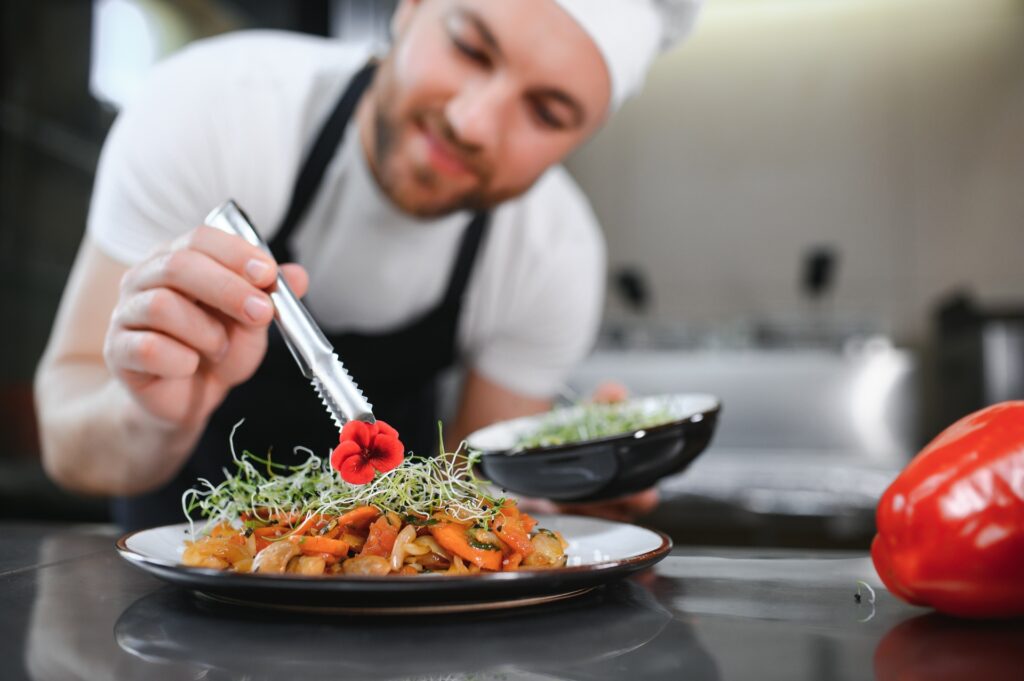
In the culinary world, food presentation is just as important as its taste. The art of plating elevates a dish, transforming it into a visual masterpiece that enhances the dining experience. Whether a professional chef or a home cook, learning to plate beautifully can leave a lasting impression on your guests. Here’s a guide to mastering the art of plating.
Plating begins with imagining how you want your dish to look. Think about the story you want your dish to tell and the emotions you want to evoke.
Tips:
The plate is your canvas, and choosing the right one sets the stage for your dish.
Tips:
Balance is crucial in plating—both in terms of visual appeal and portion distribution.
Tips:
Colour is a powerful tool in plating, adding vibrancy and drawing attention to the dish.
Tips:
A visually interesting plate often includes a mix of textures that excite the eyes and the palate.
Tips:
Adding height and structure creates drama and dimension on the plate.
Tips:
Sauces can enhance a dish’s flavour and serve as a visual element on the plate.
Tips:
Garnishes should enhance the dish visually and flavour-wise without being an afterthought.
Tips:
While aesthetics is important, the plate must remain functional and enjoyable.
Tips:
Plating is an art that improves with practice. Experiment with different styles and techniques to develop your unique plating approach.
Tips:
The art of plating is about more than just making food look beautiful—it’s about creating an experience that delights all the senses. You can transform any dish into art by focusing on balance, colour, texture, and creativity. As with any skill, practice and passion are the keys to mastering this craft. So, grab your plate, let your imagination run wild, and let your food tell a story!
Chef Abdul © Copyright 2024. All rights reserved.